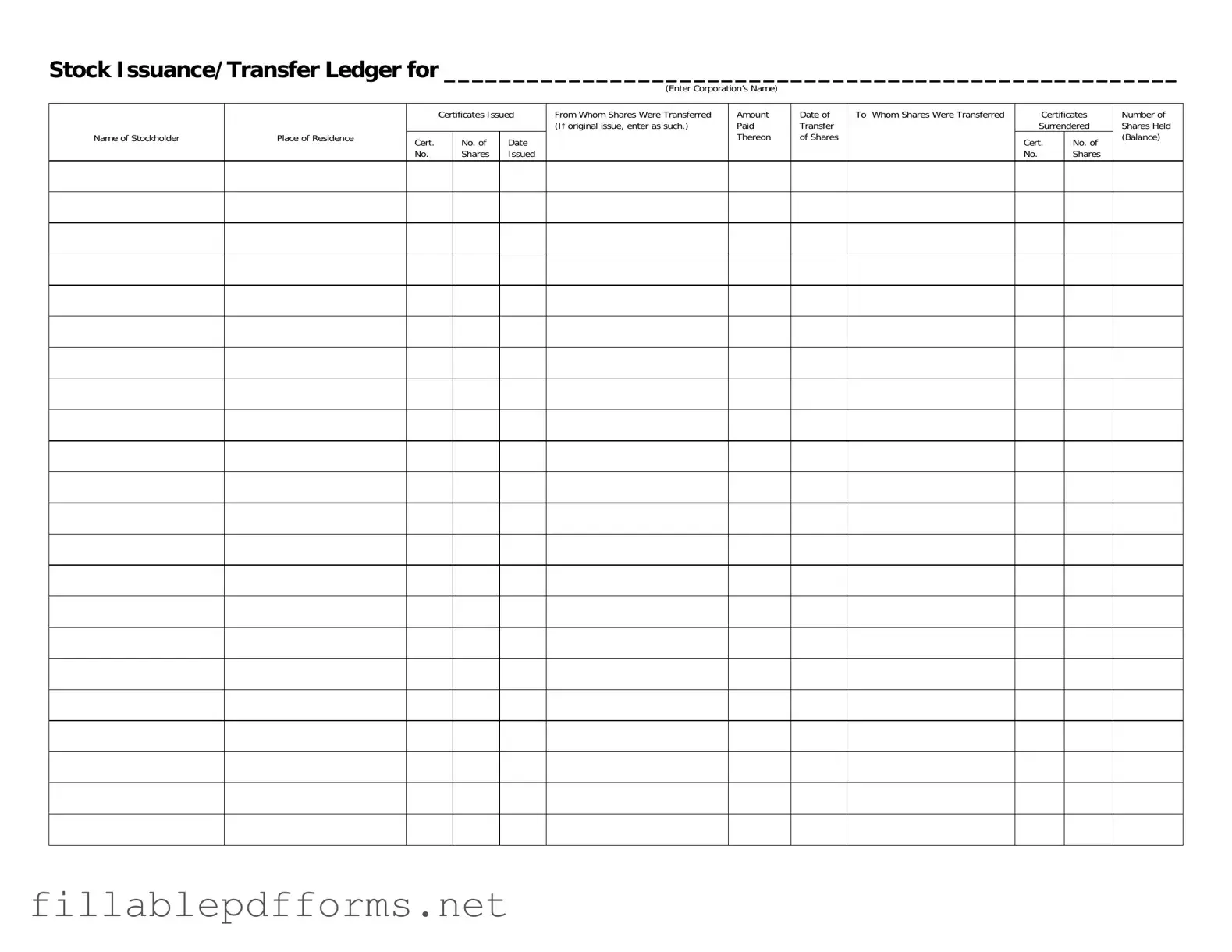The Stock Transfer Ledger form serves a crucial role in documenting the ownership and transfer of shares within a corporation. This form is essential for maintaining accurate records of stock issuance and transfers, ensuring that both the company and its shareholders have a clear understanding of ownership at any given time. At the top of the form, the corporation's name is prominently displayed, establishing the context for the subsequent entries. Each stockholder's name and place of residence must be recorded, providing essential identification details. The ledger includes sections for noting the certificates issued, along with their corresponding certificate numbers and the dates of issuance. It also captures information about the transfer of shares, including from whom the shares were transferred, the amount paid for the shares, and the date of transfer. Additionally, the form requires documentation of the certificates surrendered during the transfer process, ensuring a complete and accurate transaction record. Finally, the ledger summarizes the number of shares held by each stockholder after the transfer, allowing for easy tracking of ownership changes over time.
